The Reverend Doctor Christopher Syn is the smuggler hero of a series of novels by Russell Thorndike. The first book, Doctor Syn: A Tale of the Romney Marsh was published in 1915. The story idea came from smuggling in the 18th-century Romney Marsh, where brandy and tobacco were brought in at night by boat from France to avoid the tax. Minor battles were fought, sometimes at night, between gangs of smugglers, such as the Hawkhurst Gang, and the Revenue, supported by the army and local militias in South Kent and Sussex.

Margaret Mary Day Lockwood, CBE, was an English actress. One of Britain's most popular film stars of the 1930s and 1940s, her film appearances included The Lady Vanishes (1938), Night Train to Munich (1940), The Man in Grey (1943), and The Wicked Lady (1945). She was nominated for the BAFTA Award for Best British Actress for the 1955 film Cast a Dark Shadow. She also starred in the television series Justice (1971–74).
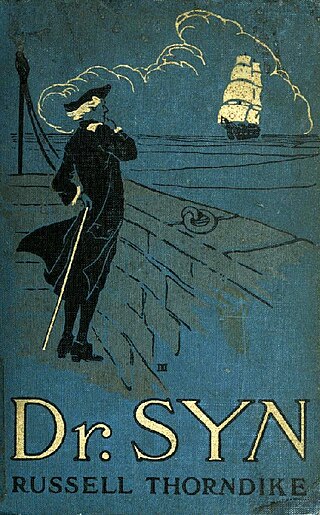
Doctor Syn: A Tale of the Romney Marsh is the first in the series of Doctor Syn novels by Russell Thorndike. The book follows Christopher Syn, the kindly vicar of the little town of Dymchurch. Syn seems pleasant but he has a sinister past. At one time he was the vicious pirate Captain Clegg and he is also the mysterious "Scarecrow of Romney Marsh", masked leader of the local smugglers.

Gainsborough Pictures was a British film studio based on the south bank of the Regent's Canal, in Poole Street, Hoxton in the former Metropolitan Borough of Shoreditch, northeast London. Gainsborough Studios was active between 1924 and 1951. The company was initially based at Islington Studios, which were built as a power station for the Great Northern & City Railway and later converted to studios.

The Wicked Lady is a 1945 British costume drama film directed by Leslie Arliss and starring Margaret Lockwood in the title role as a nobleman's wife who becomes a highwaywoman for the excitement. The film had one of the largest audiences for a film of its period, 18.4 million.
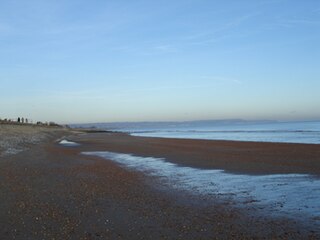
Dymchurch is a village and civil parish in the Folkestone and Hythe district of Kent, England. The village is located on the coast five miles (8 km) south-west of Hythe, and on the Romney Marsh.
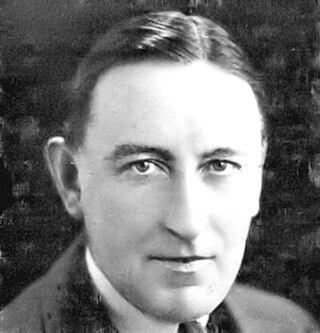
Arthur Russell Thorndike was a British actor and novelist, best known for the Doctor Syn of Romney Marsh novels. Less well-known than his sister Sybil but equally versatile, Russell Thorndike's first love was writing and, after serving in World War I, he devoted himself to it.

Captain Clegg is a 1962 British adventure horror film directed by Peter Graham Scott and starring Peter Cushing, Yvonne Romain, Patrick Allen, and Oliver Reed. It produced by John Temple-Smith for Hammer Film Productions. It is loosely based on the Doctor Syn character created by Russell Thorndike.

John Loder was established as a British film actor in Germany and Britain before migrating to the United States in 1928 for work in the new talkies. He worked in Hollywood for two periods, becoming an American citizen in 1947. After living also in Argentina, he became a naturalized British citizen in 1959.

The Man in Grey is a 1943 British film melodrama made by Gainsborough Pictures; it is considered to be the first of a series of period costume dramas now known as the "Gainsborough melodramas". It was directed by Leslie Arliss and produced by Edward Black from a screenplay by Arliss and Margaret Kennedy that was adapted by Doreen Montgomery from the 1941 novel The Man in Grey by Eleanor Smith. The film's sets were designed by Walter Murton.
Bernard Knowles was an English film director, producer, cinematographer and screenwriter. Born in Manchester, Knowles worked with Alfred Hitchcock on numerous occasions before the director emigrated to Hollywood.
Leslie Arliss was an English screenwriter and director. He is best known for his work on the Gainsborough melodramas directing films such as The Man in Grey and The Wicked Lady during the 1940s.

Madonna of the Seven Moons is a 1945 British drama film starring Phyllis Calvert, Stewart Granger and Patricia Roc. Directed by Arthur Crabtree for Gainsborough Pictures, the film was produced by Rubeigh James Minney, with cinematography from Jack Cox and screenplay by Roland Pertwee. It was one of the Gainsborough melodramas of the mid-1940s popular with WW2-era female audiences.
Edward Black was a British film producer, best known for being head of production at Gainsborough Studios in the late 1930s and early 1940s, during which time he oversaw production of the Gainsborough melodramas. He also produced such classic films as The Lady Vanishes (1938). Black has been called "one of the unsung heroes of the British film industry" and "one of the greatest figures in British film history, the maker of stars like Margaret Lockwood, James Mason, John Mills and Stewart Granger. He was also one of the very few producers whose films, over a considerable period, made money." In 1946 Mason called Black "the one good production executive" that J. Arthur Rank had. Frank Launder called Black "a great showman and yet he had a great feeling for scripts and spent more time on them than anyone I have ever known. His experimental films used to come off as successful as his others."

Jassy is a 1947 British colour film historical melodrama set in the early 19th century, based on a novel by Norah Lofts. It is a Gainsborough melodrama, the only one to be made in Technicolor. It was the last "official" Gainsborough melodrama.
The Gainsborough melodramas were a sequence of films produced by the British film studio Gainsborough Pictures between 1943 and 1947 which conformed to a melodramatic style. The melodramas were not a film series but an unrelated sequence of films which had similar themes that were usually developed by the same film crew and frequently recurring actors who played similar characters in each. They were mostly based on popular books by female novelists and they encompassed costume dramas, such as The Man in Grey (1943) and The Wicked Lady (1945), and modern-dress dramas, such as Love Story (1944) and They Were Sisters (1945). The popularity of the films with audiences peaked mid-1940s when cinema audiences consisted primarily of women. The influence of the films led to other British producers releasing similarly themed works, such as The Seventh Veil (1945), Pink String and Sealing Wax (1945), Hungry Hill (1947), The White Unicorn (1947), Idol of Paris (1948), and The Reluctant Widow (1950) and often with the talent that made Gainsborough melodramas successful.
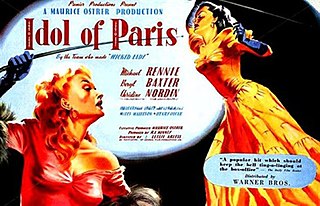
Idol of Paris is a 1948 film based on the novel Paiva, Queen of Love by Alfred Schirokauer, about a mid-19th century French courtesan Theresa who sleeps her way from poverty to the top of Second Empire society. It was an attempt by its makers to imitate the success of the Gainsborough melodramas.

Love Story is a 1944 British black-and-white romance film directed by Leslie Arliss and starring Margaret Lockwood, Stewart Granger, and Patricia Roc. Based on a short story by J. W. Drawbell, the film is about a concert pianist who, after learning that she is dying of heart failure, decides to spend her last days in Cornwall. While there, she meets a former RAF pilot who is going blind, and soon a romantic attraction forms. Released in the United States as A Lady Surrenders, this wartime melodrama produced by Gainsborough Pictures was filmed on location at the Minack Theatre in Porthcurno in Cornwall, England.

Harold Huth was a British actor, film director and producer.
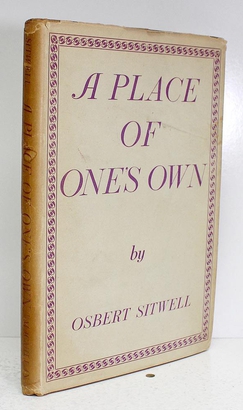
A Place of One's Own is a mystery novel written by the British author Osbert Sitwell that was published in 1940. Belonging to the ghost story genre, the novel was an extension of a short story that Sitwell had previously written. The plot follows the lives of an elderly couple at the turn of the twentieth century who move into a new house, only to discover that it appears to be haunted.















